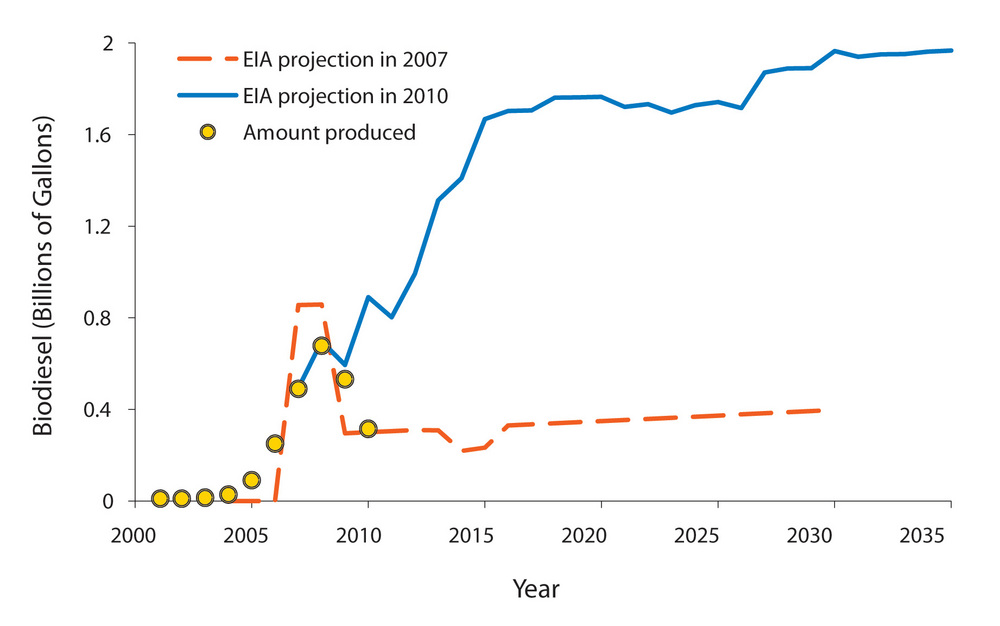Better for Biodiesel

DATA SOURCES: EIA
November 21, 2011
BY Erin Krueger
It is common knowledge that the cellulosic biofuels industry has taken longer to ramp-up production than originally anticipated. This can be attributed to many factors, including the inability to secure financing during the global recession. To accommodate the realities of industry, the U.S. EPA is able to modify the original compliance volumes outlined in the legislation that established the renewable fuel standard (RFS2) for each year’s compliance period. For example, the agency has proposed significantly reducing the 2012 cellulosic target to accurately reflect the current state of the industry.
In October, the National Research Council released a report that claims the U.S. is likely unable to meet some mandates set under the RFS2, unless policies are changed or new innovative technologies are developed. Specifically, the report states that the biofuels industry is expected to produce enough conventional biofuels and biomass-based diesel to meet targets, but questions how the cellulosic mandate will be met.
Advertisement
Advertisement
The report further addresses the impact of biofuels on greenhouse gas emissions. According to the report, feedstock production of dedicated energy crops will probably either require the conversion of uncultivated land to farm land or displace commodity crops and pastures. The authors of the report also touch on land use change, noting that the RFS2 program can neither prevent market-mediated efforts nor control land use or land cover changes in other countries.
While the report did not show cellulosic biofuel production in a positive light, it did highlight several positive attributes of biodiesel. The National Biodiesel Board spoke out thanking the authors of the report for recognizing the wide variety of environmental and economic benefits that biodiesel achieves. For example, the study pointed out that soy biodiesel can have a positive impact on livestock feed prices by helping to hold costs down.
Advertisement
Advertisement
The NBB has also pointed out that there are significant uncertainties associated with the hypothetical modeling used to calculate indirect land use change. According to Anne Steckel, vice president of federal affairs for the NBB, the EPA has determined through its own analysis that biodiesel reduces greenhouse gas emissions by 57 to 86 percent, depending on the feedstock used.
“We were pleased to see the authors reaffirm that biodiesel is an advanced biofuel that can meet the biomass-based diesel targets under the EPA's renewable fuel standard,” Steckel said. “In fact, biodiesel—as an advanced biofuel under RFS2—is also well-positioned to help fill the program's general volume requirement for advanced biofuels.”
—Erin Voegele
Upcoming Events





